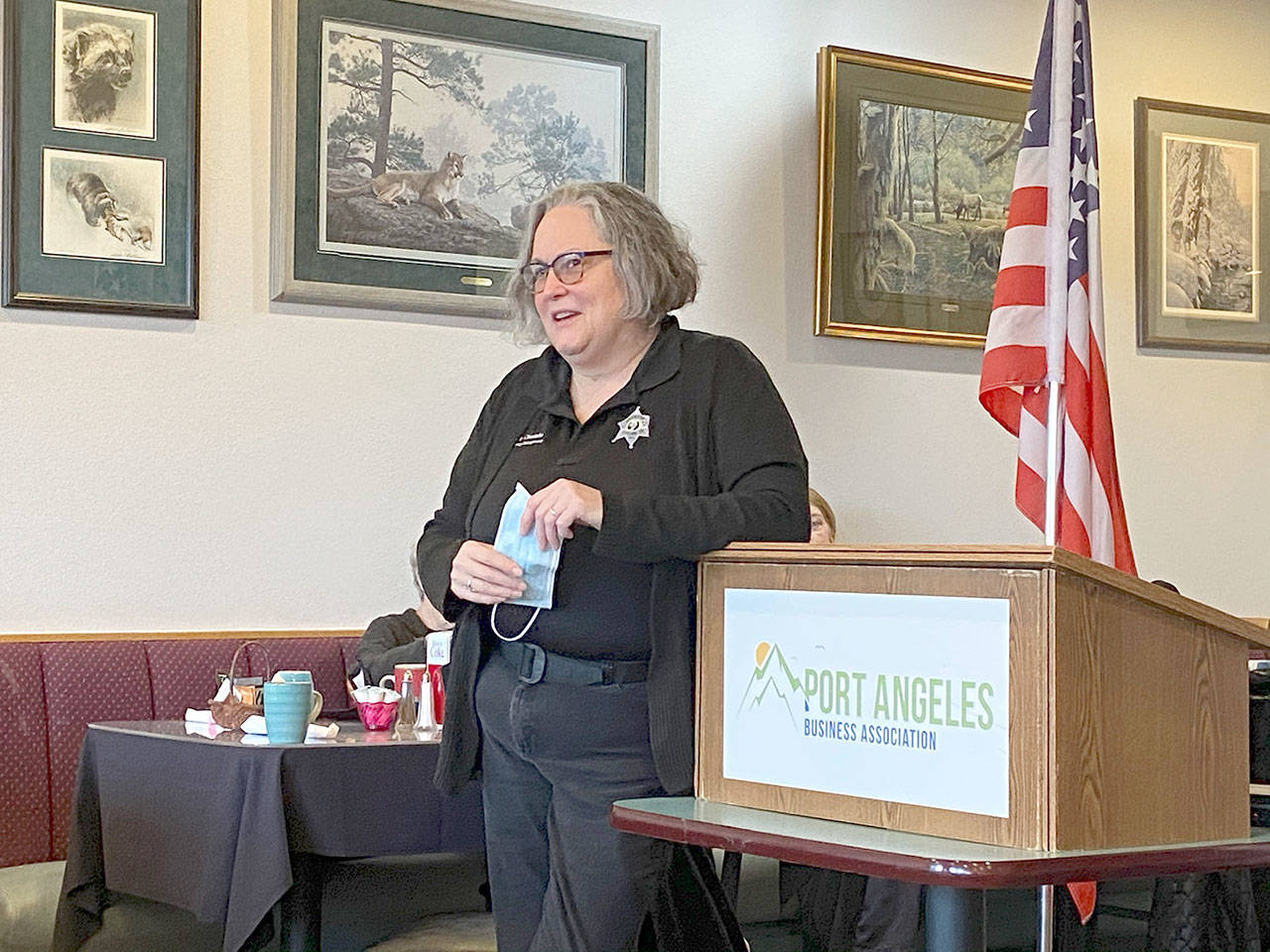Anne Chastain doesn’t care why a person objects to taking a COVID-19 vaccine.
Clallam County emergency and public health officials will simply collect vaccination data, encourage inoculations and continue to get thousands of shots into arms every week, she said.
Chastain, the county’s Emergency Operations Center (EOC) coordinator, was asked by a Port Angeles Business Association member on March 30 whether she was tracking religious or political opposition to the COVID-19 vaccines.
“Nah, I don’t care,” Chastain told 14 PABA members.
“Seriously, it makes no difference to me whether or not somebody is not getting a vaccine because they believe it’s putting Bill Gates’ nanoprobes into their brain, or they don’t like needles.
“It doesn’t matter,” Chastain added. “I just want to know how many.”
Given the county’s high vaccination rates and increasing supplies of Pfizer and Moderna vaccine, Chastain predicted Clallam County would reach herd immunity by June or possibly late May.
“We’re going to hit herd immunity soon,” Chastain said in the breakfast meeting at Joshua’s Restaurant.
Chastain said COVID-19 was a “dry run” for the Cascadia earthquake scenario.
The pandemic affirmed her suspicion that rural areas like Clallam County will be largely overlooked after a major earthquake or other natural disaster, she said.
The bulk of state resources and decision-making for COVID-19 has been focused on the Interstate 5 corridor in the Puget Sound area, Chastain said.
“My biggest takeaway from this entire event is this is how they’re going to treat us during Cascadia,” Chastain said.
“We have just now had a massive event that affected the entire state, and deeply affected the I-5 corridor, and little old Clallam County has been really marginalized as far as the response.”
Clallam County did not receive test kits early in the pandemic because it could not prove it had cases of COVID-19, Chastain said.
“We were kind of stuck in a loop there where we couldn’t prove that we had the cases without the tests, which we could not get until we had the cases,” Chastain said.
Chastain gave other examples of bureaucratic roadblocks that slowed the distribution of personal protective equipment, test kits and vaccines.
The state Department of Natural Resource obtained N95 masks and nitrile gloves for workers cleaning restrooms at DNR facilities while Clallam County’s front-line medical workers used surgical masks and vinyl gloves, she said.
“As a state agency, they had priority,” Chastain said.
“The biggest hiccup for us in the beginning,” she added, “was that our illustrious governor kept moving the goal posts on us.”
Chastain lamented that phased reopenings for businesses used an entirely different system than the tiered approach for vaccine eligibility.
“The business response and the vaccine response happened in silos,” Chastain said.
“For example, restaurants are back open, but I can’t vaccinate food service workers until next week. Grocery stores (workers) we can vaccinate, but that just happened a week ago.”
Clallam County missed a shipment of vaccine when it switched between the Moderna and Pfizer for a February mass vaccination clinic in Port Angeles.
“We called to find out why we weren’t getting our Moderna vaccine, and they said ‘Well, you didn’t even do a clinic last weekend,’ ” Chastain said.
“We said we vaccinated 1,500 people (with Pfizer). Apparently those two people can’t talk to each other, and that’s been a continual issue in this response.”
Chastain worked closely with Clallam County Health Officer Dr. Allison Berry and Undersheriff Ron Cameron to organize the weekend mass vaccination clinics at Port Angeles High School.
She said 884 were vaccinated on Saturday and 877 received a shot Sunday.
Other successful vaccination clinics have been organized by Forks Community Hospital and the Jamestown Family Health Clinic in Sequim, she said.
“We were the No. 1 county in the state as far as per-capita population vaccinated, and we were absolutely head and shoulders above everybody else,” Chastain said.
The Port Angeles clinic was based on a model provided by a volunteer who had worked at a vaccination site in Oregon in the 1980s, Chastain said.
“This is basic FEMA (Federal Emergency Management Agency) emergency response,” Chastain said, referring to Point of Distribution (POD)s.
“It is the same system, whether we are handing out water to hurricane victims, or whether we’re handing out blankets to people in Houston whose power is shut off, or whether we’re handing out vaccine.”
Rural counties must show that they have used more than 95 percent of their vaccine doses before they receive another allotment from the state, Chastain said.
Olympic Medical Center can store up to 90,000 dozes of vaccine in freezers at the Port Angeles hospital.
“We’re starting to get a little more consistency in vaccine, but it’s always a surprise,” Chastain said.
About 90 percent of Clallam County residents 75 and older had been vaccinated as of Tuesday.
“As we’re going lower (in ages), we’re seeing it dip some,” Chastain said.
“Typically, the hardest group to vaccinate are the 20-somethings.”



